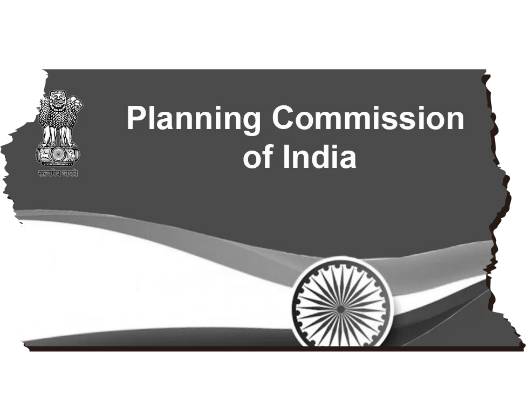Pictures
Unknown authorUnknown author, Public domain, via Wikimedia Commons
Unknown authorUnknown author, Public domain, via Wikimedia Commons
The setting up of the Planning Commission itself was controversial in that it is neither a constitutional body nor even a statutory organization. The Government of India simply resolved to create one in 1950. Its members are not elected to make it representative; rather, they are appointed by the prime minister. It is not responsible to anyone else either. Yet, it is invested with great powers to plan, and even exercise, executive powers insofar as the various plans of both the center and the states would have to be approved by it. The then finance minister, Sir John Mathai, resigned in protest against the establishment of such a Commission. This criticism was countered by the argument that after all the body is chaired by the prime minister as such, and that makes him/her responsible for all its work. While the first prime minister did indeed chair the Commission, soon it was found out that he was too busy to get really involved. He in turn then appointed a deputy chair, who since then has become the focal point. But the deputy chair also is an appointee of the prime minister! Thus, the ARC in 1969 made several recommendations: that the prime minister be associated with the Commission but without being its chair; that cabinet ministers ought not to be associated with the Commission as they might politicize the process; and that the entire cabinet, not its subcommittee should study the reports of the Commission and approve the plan. None of these recommendations has been followed, and the Commission continues as it was originally configured with members appointed by the prime minister.
To date, there have been eight Five-Year Plans. Here again, we can note a certain lack of continuity in that the plans varied in their priorities. The First Plan insisted on agricultural development; the Second Plan wanted industrial growth; and the Third Plan emphasised economic growth and equitable distribution. Following the third plan, there have been three successive ones. The Fourth, starting in 1969, sought to accelerate economic growth, with special attention to agricultural production and dispersal of industry and help for the smaller and weaker producers. The Fifth Plan, which wanted to remove poverty and provide for economic self-sufficiency, was abandoned in 1978. The Sixth Plan was a rolling plan for the years 1980–1983. The Seventh Plan (1985–1990) revolved around the theme of “food, work and productivity.” The Eighth Plan started by the Rajiv Gandhi government was postponed by the National Front government of V.P. Singh. The successor government of Chandra Shekhar was too preoccupied with its own survival to even present a budget. The Eighth Plan was finally unveiled in 1992
